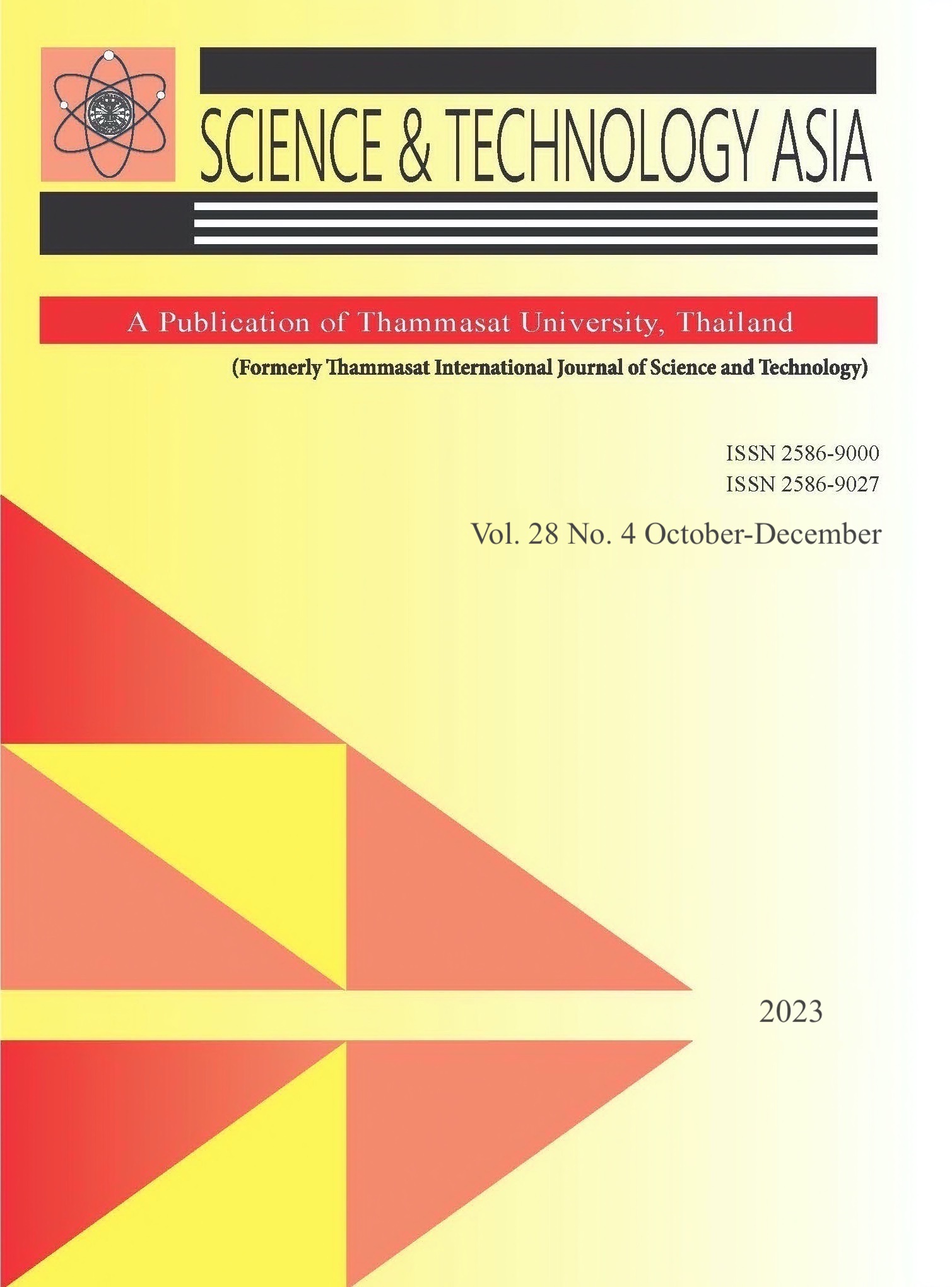A Dynamical and Sensitivity Analysis of the Caputo Fractional-Order Ebola Virus Model: Implications for Control Measures
Main Article Content
Abstract
The recurrence of outbreaks in cases of Ebola virus among African countries remains one of the greatest issues of concern. Practices such as hunting or consumption of contaminated bush meat, unsafe funeral practices, and environmental contamination have all been implicated as possible contributors. This paper investigates the transmission dynamics of the Ebola virus model in the setting of a Caputo fractional-order derivative that accounts for both direct and indirect transmissions of the virus. By employing the concept of fixed theorems, we derived the existence and uniqueness results of the model. Moreover, we analyzed the forward normalized sensitivity indices to identify the critical parameters for controlling the infection and found that reducing the contact rate between infected individuals and susceptible vectors is vital to limiting the virus’s spread. Comparing the proposed fractional-order model with those of the previously developed integer-order model numerically, we found that the proposed model provides more reliable information on the model’s dynamics. Thus, we conclude that the Caputo fractional-order operator is a precise tool for describing the proposed model behavior and can help understand the complexities of Ebola virus disease outbreaks.
Article Details

This work is licensed under a Creative Commons Attribution-NonCommercial-NoDerivatives 4.0 International License.
References
Yanagihara K, Sasaki D, Akamatsu N, Kaku N, Kosai K. Ebola Virus Disease (Ebola Hemorrhagic Fever). Rinsho byori The Japanese Journal of Clinical Pathology. 2016;64(9):1025–32.
Amundsen SB. Historical analysis of the Ebola virus: prospective implications for primary care nursing today. Clinical Excellence for Nurse Practitioners: The International Journal of NPACE. 1998;2(6):343–51.
Barbiero VK. Ebola: A hyperinflated emergency. Global Health: Science and Practice. 2020;8(2):178–82.
Feldmann H, Geisbert TW. Ebola haemorrhagic fever. The Lancet. 2011;377(9768):849–62.
Mhlanga A. Dynamical analysis and control strategies in modelling Ebola virus disease. Advances in Difference Equations. 2019;2019:1–27.
Olajide AJ. Mathematical analysis of the role of detection rate on dynamical spread of Ebola Virus disease. Journal of Modeling and Simulation of Materials. 2020;3(1):37–52.
Agbomola J, Loyinmi A. A Mathematical Model For The Dynamical Behavior Of Ebola Virus Transmission In Human-Bat Population: Implication Of Immediate Discharge Of Recovered Individuals. 2022.
Bishop BM. Potential and emerging treatment options for Ebola virus disease. Annals of Pharmacotherapy. 2015;49(2):196–206.
Judson S, Prescott J, Munster V. Understanding ebola virus transmission. Viruses. 2015;7(2):511–21.
Berge T, Ouemba Tassé A, Tenkam H, Lubuma J. Mathematical modeling of contact tracing as a control strategy of Ebola virus disease. International Journal of Biomathematics. 2018;11(07):1850093.
Tadmon C, Kengne JN. Mathematical analysis of a model of Ebola disease with control measures. International Journal of Biomathematics. 2022;15(07):2250048.
Ouemba TassÉ A, Tsanou B, Lubuma J, Woukeng JL, Signing F. Ebola virus disease dynamics with some Preventive measures: A
Case study of the 2018–2020 Kivu Outbreak. Journal of Biological Systems. 2022;30(01):113–48.
Chen P, Fan W, Guo X. A hybrid simulation model to study the impact of combined interventions on Ebola epidemic. Plos one. 2021;16(7):e0254044.
Bouba A, Helle KB, Schneider KA. Predicting the combined effects of case isolation, safe funeral practices, and contact tracing during Ebola virus disease outbreaks. Plos one. 2023;18(1):e0276351.
Chippaux JP. Outbreaks of Ebola virus disease in Africa: the beginnings of a tragic saga. Journal of venomous animals and toxins including tropical diseases. 2014;20:2–14.
Castillo-Chavez C, Blower S, van den Driessche P, Kirschner D, Yakubu AA. Mathematical approaches for emerging and reemerging infectious diseases: models, methods, and theory. vol. 126. Springer Science & Business Media; 2002.
Castillo-Chavez C, Song B. Dynamical models of tuberculosis and their applications. Math Biosci Eng. 2004;1(2):361–404.
Ringa N, Diagne M, Rwezaura H, Omame A, Tchoumi S, Tchuenche J. HIV and COVID-19 co-infection: A mathematical model and optimal control. Informatics in Medicine Unlocked. 2022;31:100978.
Mainardi F. Fractional calculus and waves in linear viscoelasticity: an introduction to mathematical models. World Scientific; 2010.
Podlubny I. Fractional differential equations: an introduction to fractional derivatives, fractional differential equations, to methods of their solution and some of their applications. vol. 198. Elsevier; 1998.
Rudolf H. Applications of fractional calculus in physics. world scientific; 2000.
Atangana A. Modelling the spread of COVID-19 with new fractal-fractional operators: Can the lockdown save mankind before vaccination? Chaos, Solitons & Fractals. 2020;136:109860.
Hanif A, Butt A, Ahmad S, Din RU, Inc M. A new fuzzy fractional order model of transmission of Covid-19 with quarantine class. The European Physical Journal Plus. 2021;136(11):1–28.
Ahmed I, Goufo EFD, Yusuf A, Kumam P, Chaipanya P, Nonlaopon K. An epidemic prediction from analysis of a combined HIV-COVID-19 coinfection model via ABC-fractional operator. Alexandria Engineering Journal. 2021;60(3):2979–95.
Ahmed I, Yusuf A, Ibrahim A, Kumam P, Ibrahim MJ. A Mathematical Model of the Ongoing Coronavirus Disease (COVID-19) Pandemic: a Case Study in Turkey. Science & Technology Asia. 2022:248–58.
Rashid S, Jarad F, Alsubaie H, Aly AA, Alotaibi A. A novel numerical dynamics of fractional derivatives involving singular and nonsingular kernels: designing a stochastic cholera epidemic model. AIMS Mathematics. 2023;8(2):3484–522.
Baba IA, Nasidi BA. Fractional order epidemic model for the dynamics of novel COVID-19. Alexandria Engineering Journal. 2020.
Lakzian H, Gopal D, Sintunavarat W. New fixed point results for mappings of contractive type with an application to nonlinear fractional differential equations. Journal of Fixed Point Theory and Applications. 2016;18:251–66.


